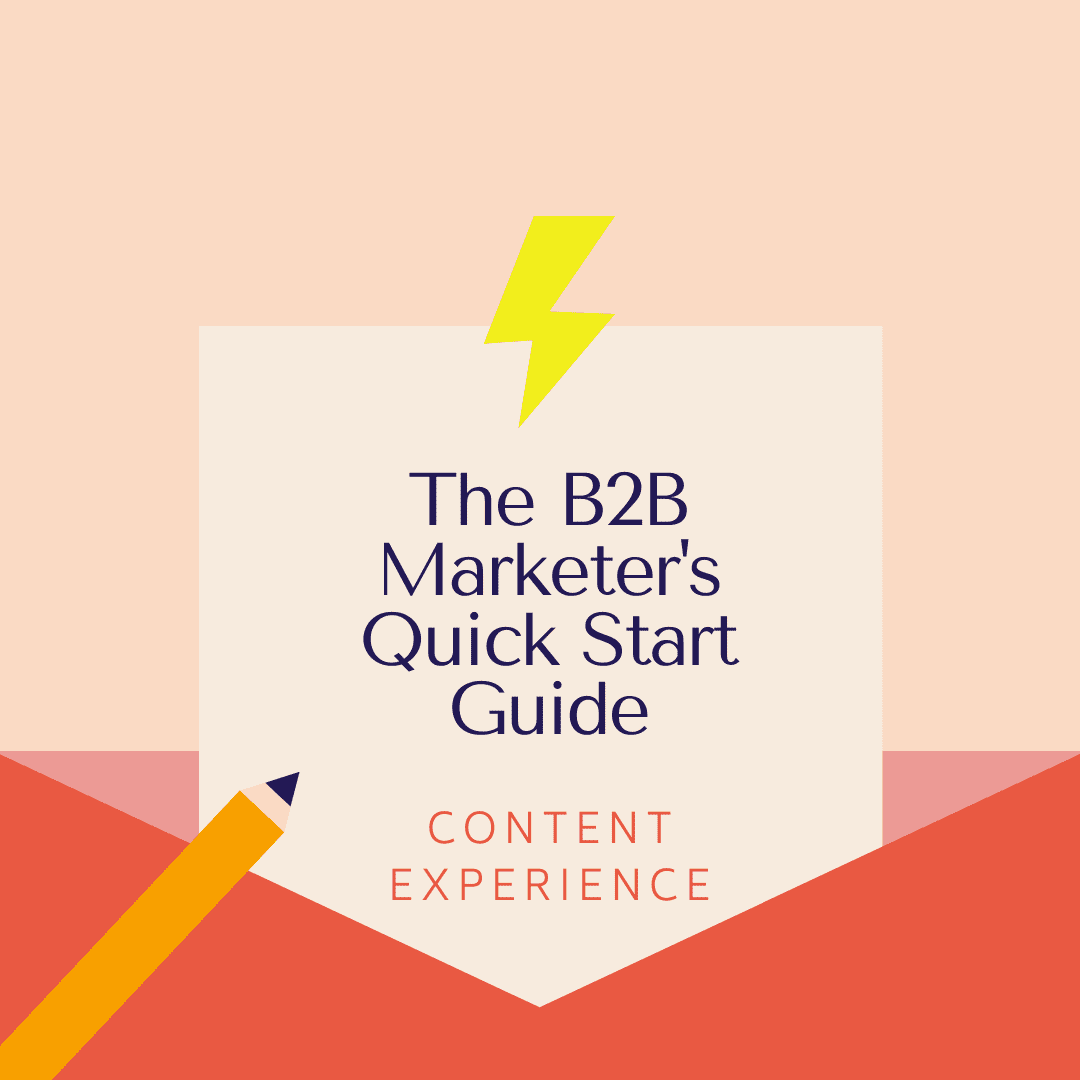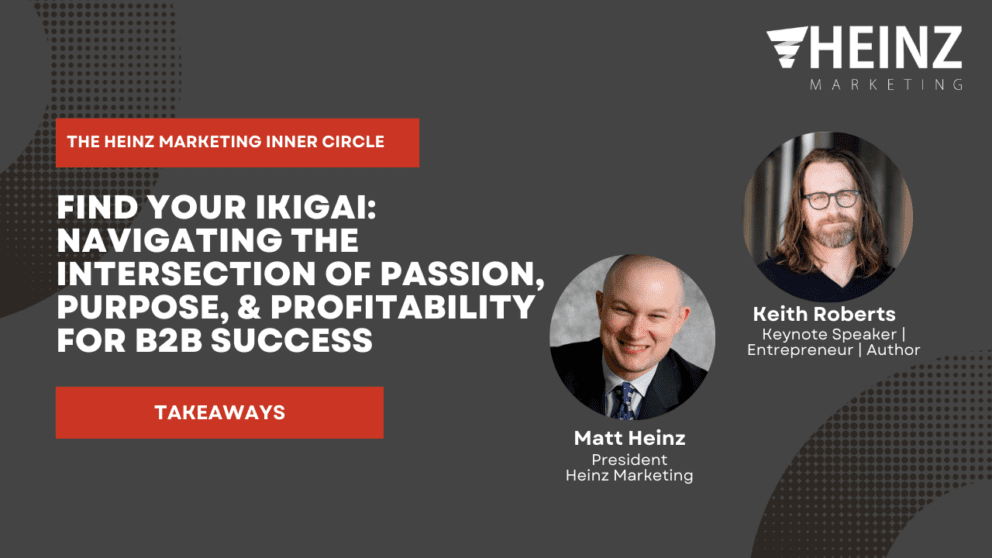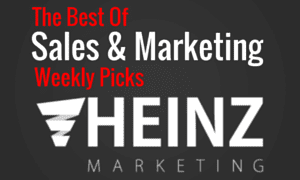The B2B Marketer’s Quick Start Guide: Content Experience

By Brenna Lofquist, Senior Marketing Consultant at Heinz Marketing
In today’s digital technology landscape there are numerous platforms, tools and technologies at the disposal of every marketer—almost too many. My goal with the Quick Start Guide series is to provide you a quick synopsis of a martech solution category. For each category I’ll highlight a few platforms/tools, the pros and cons of each, benchmarks and additional resources. Without further ado…
Welcome to the second installment of The B2B Marketer’s Quick Start Guide. Today’s post is about Content Experience Platforms. Check out the previous quick start guide post on social media.
Content Experience Platforms aren’t new however, they have become increasingly popular over the last few years. These platforms enable companies to create personalized experiences geared toward audience engagement. These platforms aren’t used to create content, something important to note.
Content Experience Platforms provide a new standard, it’s what prospects are expecting. You can’t get away with what used to be the typical resource library, with every content asset living behind a form. Prospects are looking for easily accessible content that’s catered to them.
In a CMSWire article, Uberflip CMO, Randy Frisch, breaks down content experience into three factors:
- Environment: That is how your content is contained, according to Frisch. It’s the look and feel. It’s the colors. It’s the layout. It’s all of the elements around your content, but not the content itself.
- Structure: That’s how it’s organized. When we talk about organization, we’re not talking about page layout, per se. We’re talking about, “What content comes after the other?” How do we organize content in a way that’s going to create the best buyer experience?
- Engagement: This is about trying to expedite or accelerate that journey through content.
These three factors are important to keep in mind when developing content experiences for your target audience. Now let’s get into the platforms themselves.
Content Experience Platforms
There’s a variety of content experience platforms out there, you need to find the right one based on your goals and objectives. You have the big guns like Uberflip and PathFactory, and smaller but still mighty platforms such as Hushly and Showpad Content.
Since I don’t have experience using all of these platforms (we use PathFactory internally), I’ve done some research to point out features and functionality of each and have included some ratings/reviews from G2.com.
Uberflip
- Features/functionality:
- Solutions for Demand Generation, Account-Based Marketing, Sales Engagement, Inbound Marketing, Customer Engagement and Enterprise
- Centralizes content in a single location and deliver across multiple channels
- Organizes content by topic, persona, account, industry, or stage of the funnel
- Defines recommended content by hand-selecting or using AI and intent data
- Personalizes experiences by serving up binge-worthy content personalized to your buyers’ interests or stage of the journey
- Reviews/rating:
- G2 Rating: 4.2 / 5
- Pros:
- A scalable solution that can accelerate awareness/brand building, demand generation, and sales enablement efforts
- Uberflip is like Netflix for my content where our resource center has become a competitive advantage for our company
- Great solution for scalable personalized content experiences
- Cons:
- Some limitations connecting to multiple instances of marketing automation platforms
- Scheduling functionalities don’t always work the best
- Customizing the hub wasn’t the smoothest process
PathFactory
- Features/functionality:
- Solutions for Demand Generation, Marketing Operations, Marketing Leaders, Content Marketing, Virtual Events, Sales, Account-Based Marketing, and Websites
- Increases funnel performance by allowing your audience to self-nurture after every click to content
- Qualifies leads based on actual content consumptions
- Quickly uncover which assets are top performing, so they can replace bottom performers
- Makes changes to content forms, and styling that boost campaign performance quickly an easily
- Quickly understand the performance of every channel, based on the content consumption of the audience they bring
- Reviews/rating:
- G2 Rating: 4.4 / 5
- Pros:
- PathFactory has been a game-changer for us in terms of identifying highly-engaged leads and measuring content effectiveness
- Provides a breadth of metrics to evaluate the performance of content across multiple dimensions
- A tool that we can leverage in lots of different situations where we want to get content in front of people
- Cons:
- The UX/UI on the admin end is pretty clunky and visually outdated
- The pay-per-user model isn’t scalable
Hushly
- Features/functionality:
- Gives visitors a content experience designed to draw them in and engage them
- Increases personalization through AI, intent, firmographic and rule based triggers
- Customizes with simple UI, robust integrations with intent providers and ABM platforms
- Identifies fake domains and filter out role-based email addresses, personal email domains, etc.
- Hushly’s conversion optimization software auto-enriches a complete visitor business profile based on your data requirements
- Reviews/ratings:
- G2 Rating: 4.8 / 5
- Pros:
- UI is easy to use and the pipeline results are tangible and easy to measure
- Hushly has greatly increased our lead generation from our content
- Fast implementation, best support and success around
- Serves as a one stop shop to compliment our lead generation efforts
- Technology is super easy to configure and use but more importantly it just works and delivers a better ROI on campaign we’re running
- Cons:
- There are some hard coded changes/policies that make it difficult to adhere to brand
- Wish it was easier to customize hubs without contacting the support team
Showpad Content
- Features/functionality:
- Centralizes and manage your assets with ease. Connect with your existing CMS or DAM systems
- Distributes content quickly and at scale with Showpad Content’s intuitive interface and elaborate configuration
- Discovers content with AI-driven search and recommendations. Sellers spend more time selling and less time searching for content or preparing for meetings
- Brings sales conversations to life. Empower sales to have more contextually relevant conversations by grouping content by specific topic or persona in a single page
- Instantly finds, personalizes and shares content
- Measures sales and marketing effectiveness to optimize impact
- Reviews/ratings
- G2 Rating: 4.6 / 5
- Pros:
- Offers great customer experience, is easy to use, and is the simplest way to send multiple high-resolution files and videos
- You can create a Shared Space where your client and customer can contribute to the resources shared
- Tracking user end involvement and leads to more productivity
- Cons:
- Single Sign-On can be clunky
- Difficulty integrating with Salesforce
- Can be overwhelming at times with the amount of information available
Criteria
From the research I’ve done on content experience platforms, it’s clear there are a few things to keep in mind if you are thinking obtaining a CEP or switching from one to another. Let’s break it down.
- Ease of Use: Is the UI easy to use and navigate? Is support required to make changes? Or can you make them on your own?
- Customization and Personalization: What options are available to categorize content? Can you customize the interface to match branding guidelines?
- Tracking and Reporting: How granular is the reporting? Can you easily determine which assets are underperforming?
- Integrations: What integrations are available? Do the platforms stay integrated? Are there any issues?
Are there other content experience platforms you’ve used? Let me know!





